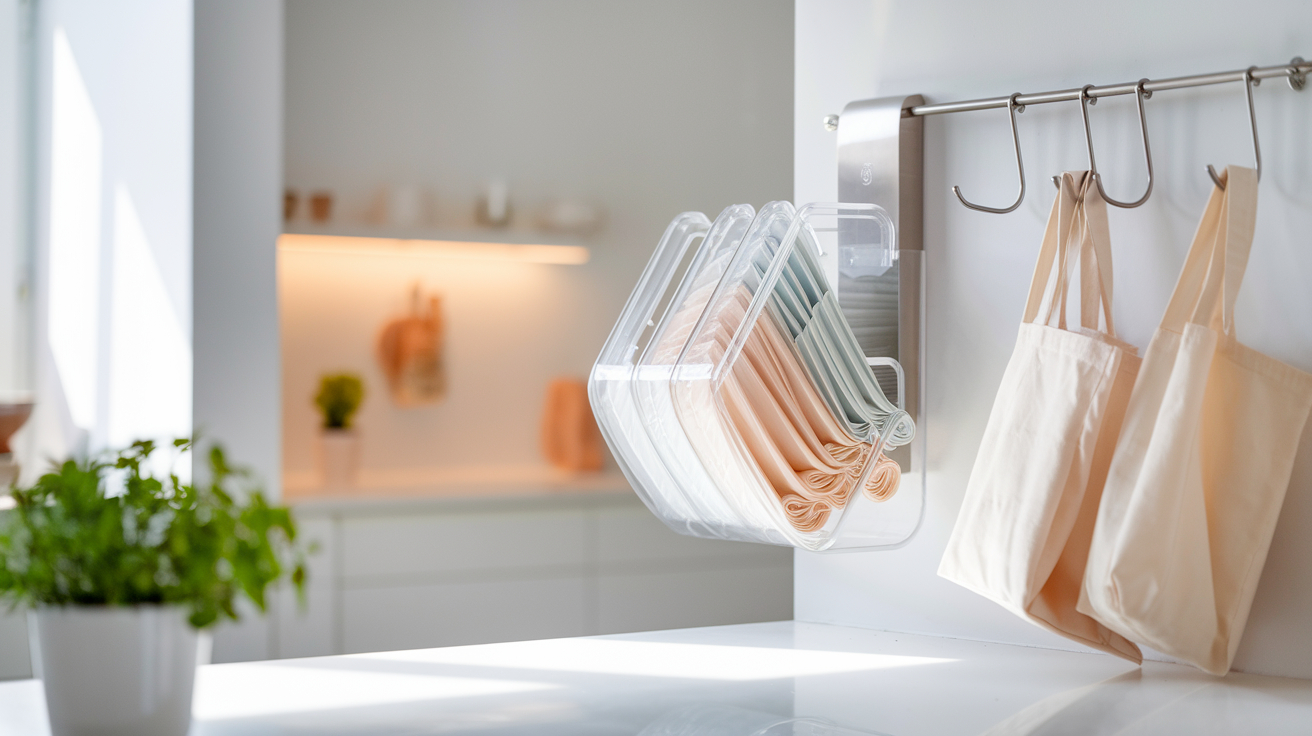Did you know that the average household accumulates over 100 plastic shopping bags annually? While many of us try to embrace reusable alternatives, those inevitable plastic bags seem to multiply in our homes like rabbits. If your kitchen cabinet is bursting with a chaotic collection of crumpled bags, you’re not alone. This comprehensive guide will walk you through everything you need to know about storing and organizing plastic bags efficiently, helping you transform that messy pile into a well-organized system.
Why Proper Plastic Bag Storage Matters
Before diving into storage solutions, let’s understand why proper organization is crucial. Beyond the obvious aesthetic benefits, organized plastic bag storage offers several significant advantages:
- Space Optimization: Well-organized bags can reduce storage space by up to 70%
- Safety: Proper storage prevents choking hazards for children and pets
- Environmental Impact: Organized storage encourages reuse and helps track consumption
- Accessibility: Easy access means you’ll actually reuse bags instead of letting them pile up
- Cost Savings: Better organization leads to more reuse and fewer new bag purchases
Best Storage Solutions for Plastic Bags
Commercial Storage Options
The market offers various dedicated storage solutions to tackle your plastic bag chaos:
- Wall-mounted Dispensers
- Perfect for kitchen or utility room
- Holds 30-50 bags
- Easy access and refill
- Professional appearance
- Over-the-door Organizers
- Utilizes unused space
- Multiple compartments
- Great for sorting by size
- No installation required
- Under-sink Solutions
- Maximizes cabinet space
- Moisture-resistant options
- Pull-out designs available
- Compact footprint
- Drawer Organizers
- Keeps bags out of sight
- Multiple size options
- Easy integration with existing storage
- Customizable compartments
DIY Storage Solutions
Don’t want to spend money on commercial options? Try these creative DIY approaches:
Upcycled Container Method
- Empty tissue box
- Clean empty wipes container
- Repurposed paper towel tubes
- Modified cereal boxes
Custom Solutions
- Cut and mount empty 2-liter bottles
- Create a hanging tube system
- Fabric pocket organizers
- Magnetic cabinet attachments
Step-by-Step Storage Methods
The Fold-and-Tuck Method
Follow these steps for perfectly folded bags:
- Prepare the Bag
- Shake out debris
- Smooth out wrinkles
- Check for holes or tears
- Folding Technique
- Lay bag flat
- Fold in half lengthwise
- Smooth out air pockets
- Create triangle folds from bottom to top
- Tuck final fold into the created pocket
- Space-saving Tips
- Store folded bags vertically
- Use dividers for different sizes
- Label storage containers
- Implement a one-in-one-out system
Organization Systems
Create an efficient system using these methods:
- Color-coding
- Green: Produce bags
- White: General purpose
- Blue: Recycling
- Black: Trash liners
- Categorization
- Size-based sorting
- Usage-based organization
- Season-specific storage
- Quality-based separation
Creative Ways to Repurpose Stored Bags
Organized storage makes it easier to repurpose bags for:
- Household Uses
- Small trash bin liners
- Paint brush covers
- Packing material
- Wet umbrella storage
- Garden Applications
- Protect plants from frost
- Line hanging baskets
- Store garden tools
- Transport yard waste
- Pet Care
- Waste disposal
- Litter box liners
- Travel accessories
- Emergency cleanup
Maintenance and Management
Keep your storage system functioning optimally:
Weekly Tasks
- Remove damaged bags
- Restock storage units
- Clean containers
- Rotate inventory
Monthly Tasks
- Deep clean storage areas
- Assess bag quantity
- Reorganize as needed
- Update labeling system
Eco-Friendly Alternatives
While organizing existing bags, consider these sustainable options:
- Reusable Alternatives
- Cotton totes
- Mesh produce bags
- Foldable shopping bags
- Insulated grocery bags
- Biodegradable Options
- Compostable bags
- Paper bags
- Plant-based plastics
- Bamboo alternatives
Expert Tips and Best Practices
Professional organizers recommend:
- Location Selection
- Choose easily accessible spots
- Consider usage frequency
- Protect from heat and moisture
- Maintain proper ventilation
- Quantity Control
- Keep 20-25 bags maximum
- Rotate stock regularly
- Share excess with neighbors
- Recycle damaged bags
- Storage Optimization
- Use vertical space
- Implement FIFO system
- Create designated zones
- Regular maintenance schedule
Frequently Asked Questions
Q: How many plastic bags should I keep? A: Keep 20-25 bags for an average household. This quantity allows for regular use while preventing overwhelming storage issues.
Q: Where is the best place to store plastic bags? A: The ideal storage location is dry, easily accessible, and away from heat sources. Common spots include under the sink, in a pantry, or mounted on a wall.
Q: How often should I clean my plastic bag storage? A: Clean storage containers monthly and inspect bags weekly for damage or dirt. Replace storage solutions every 6-12 months depending on wear.
Q: What are the most space-efficient storage methods? A: The triangle fold method combined with vertical storage maximizes space efficiency. Commercial dispensers and over-the-door organizers are also excellent space-saving options.
Conclusion
Proper plastic bag storage might seem like a small detail, but it can significantly impact your home’s organization and environmental footprint. By implementing these storage solutions and maintenance tips, you’ll transform that chaotic bag collection into an organized, functional system that saves space and encourages reuse.
Ready to tackle your plastic bag chaos? Start with one area, implement your chosen storage solution, and gradually expand your organization system. Remember, the goal isn’t perfection but progress toward a more organized, sustainable home.

